How Graham Potter outsmarted another Manchester United manager with Brighton’s 3-box-3
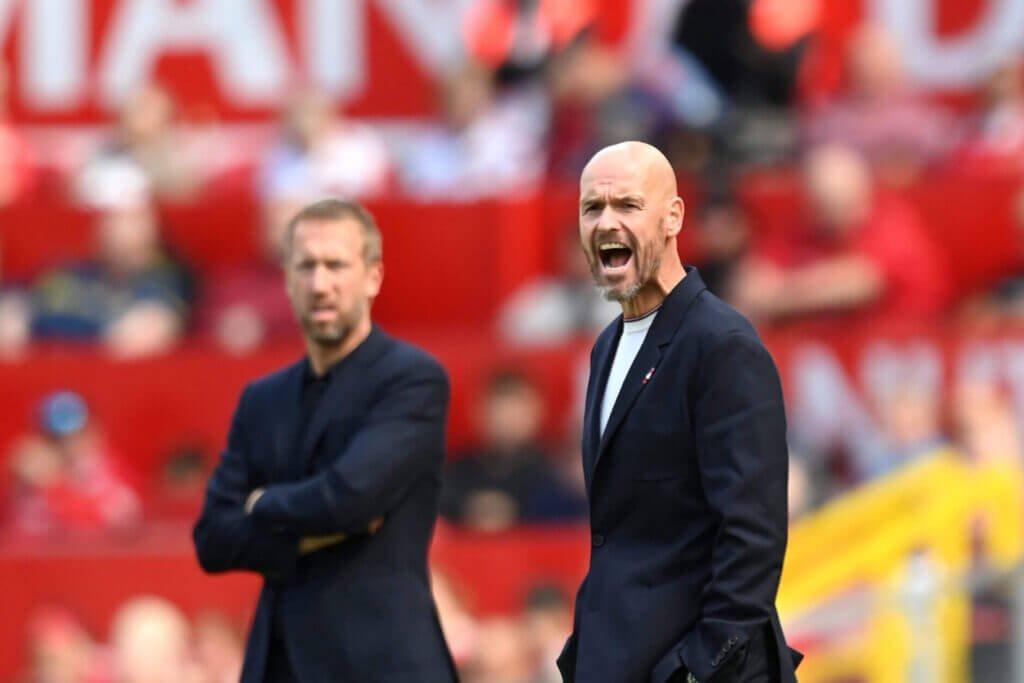
55
Brighton beat Manchester United — again.
United may have gone into the new season with a new manager in Erik ten Hag, but Graham Potter won the tactical battle once more, steering Brighton to a 2-1 victory at Old Trafford exactly four months after a 4-0 Amex demolition.
Brighton’s personnel and style was almost identical to last season’s win. Nine of the Amex starting XI lined up at Old Trafford (the missing two, Yves Bissouma and Marc Cucurella, have been sold) in a 3-box-3 formation.
A midfield box
The set-up was this: a base of two deeper central midfielders (a double pivot) with two advanced midfielders further forward at the top of the box. Against United’s midfield two, that provides a valuable overload.
At Old Trafford, Moises Caicedo and Alexis Mac Allister made the base, while Pascal Gross and Adam Lallana were at the top of the box.
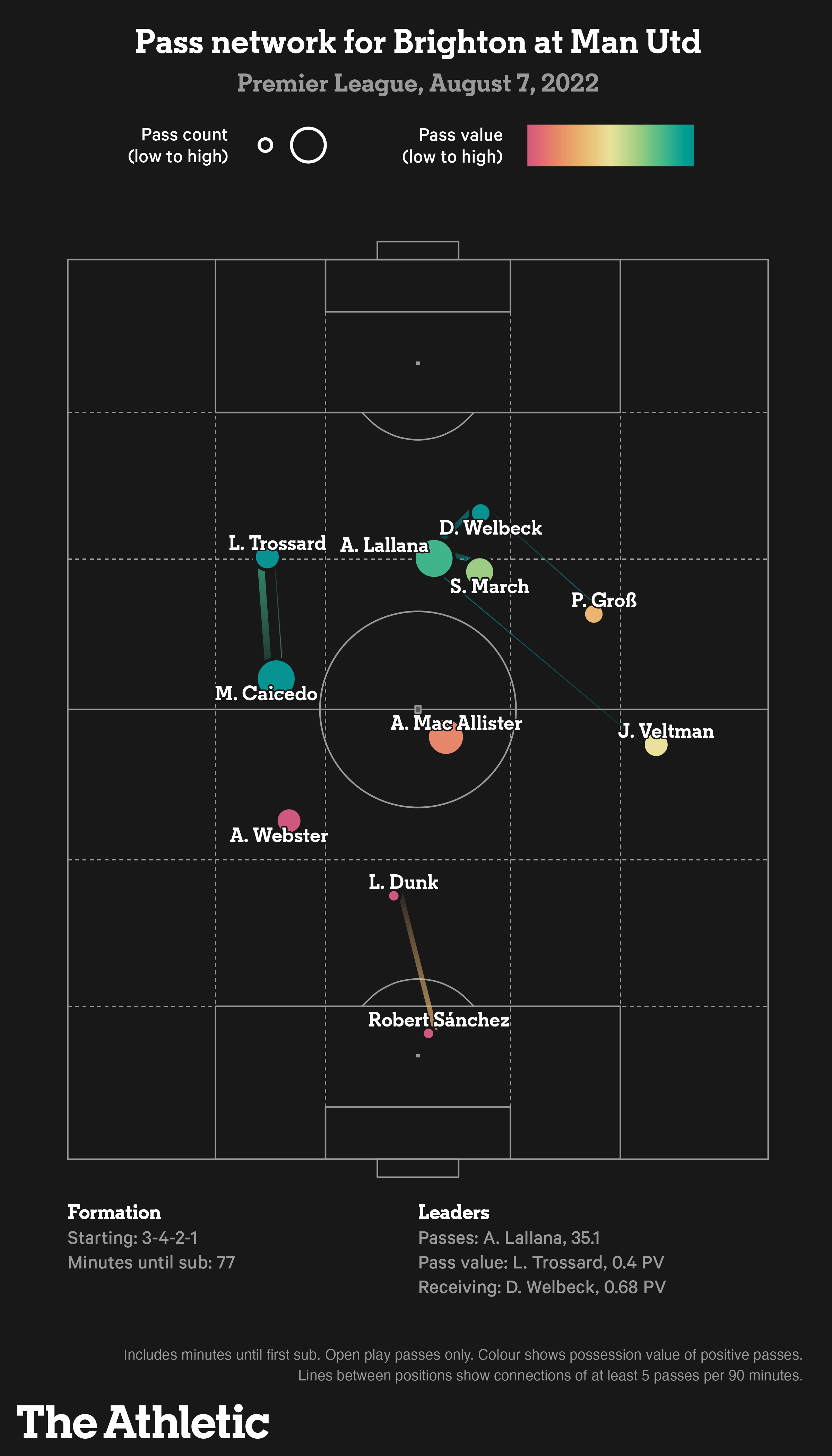
Brighton’s second goal came from that box combination.
Caicedo catalyses the move with a straight pass beyond the United midfield for Gross’ diagonal run as Brighton break from deep…
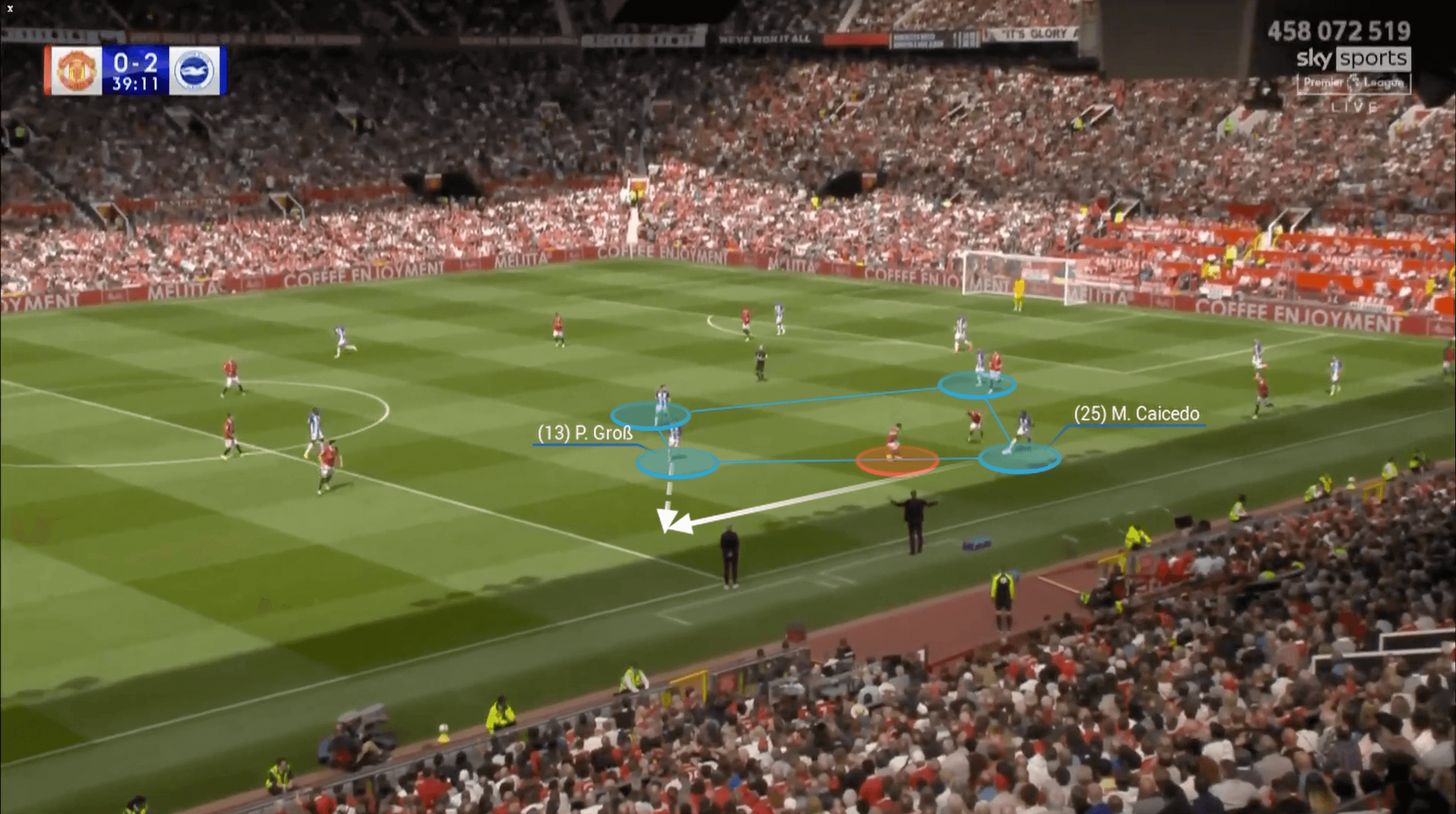
… and create a four-v-three attack.
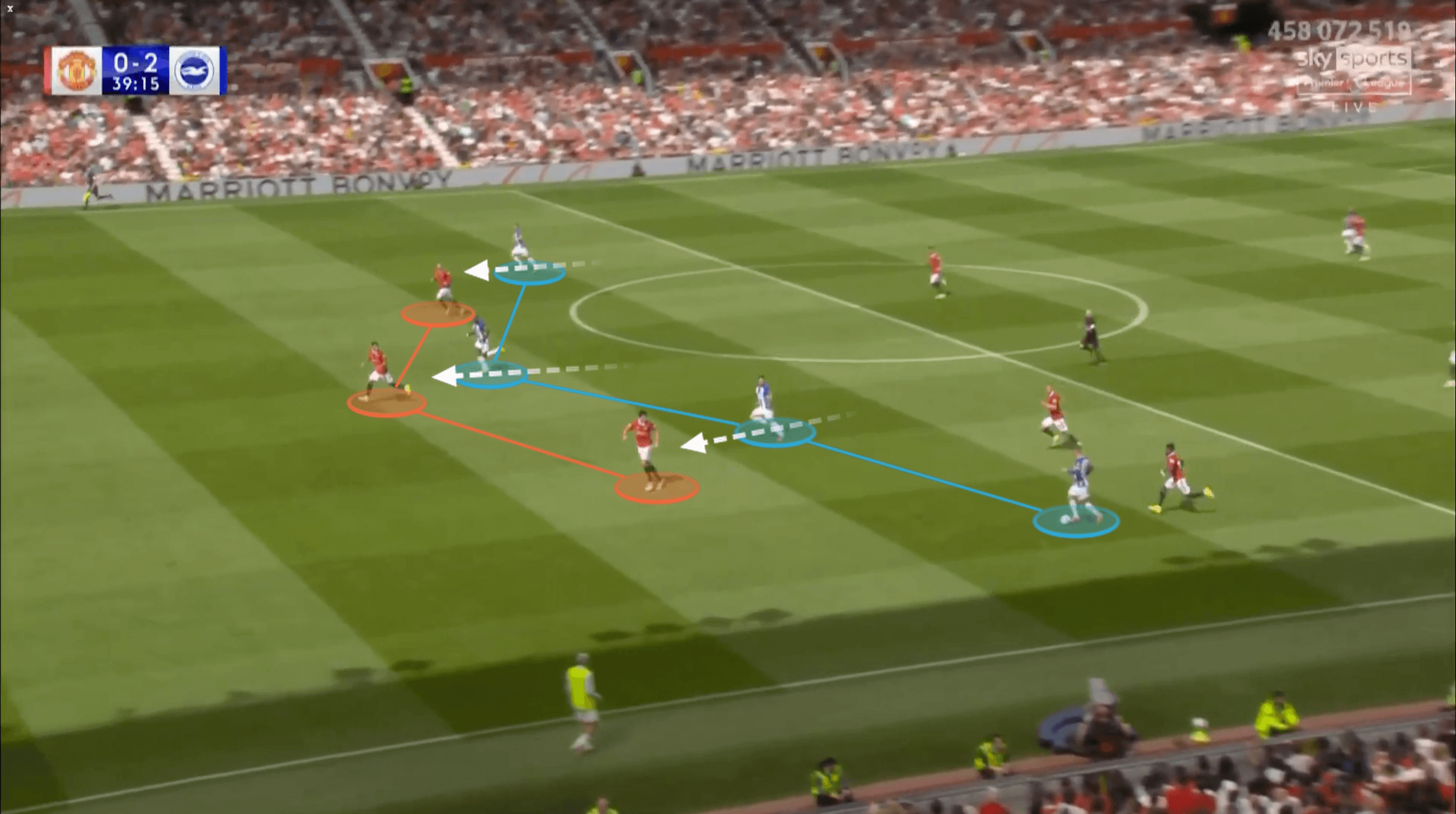
Tellingly, StatsBomb, via FBref, had Lallana (34/39), Caicedo (29/36) and Mac Allister (26/31) as Brighton’s top three players for passes completed and attempted at Old Trafford.
At the Amex in May, Caicedo and Bissouma were the base with Mac Allister and Gross at the top.
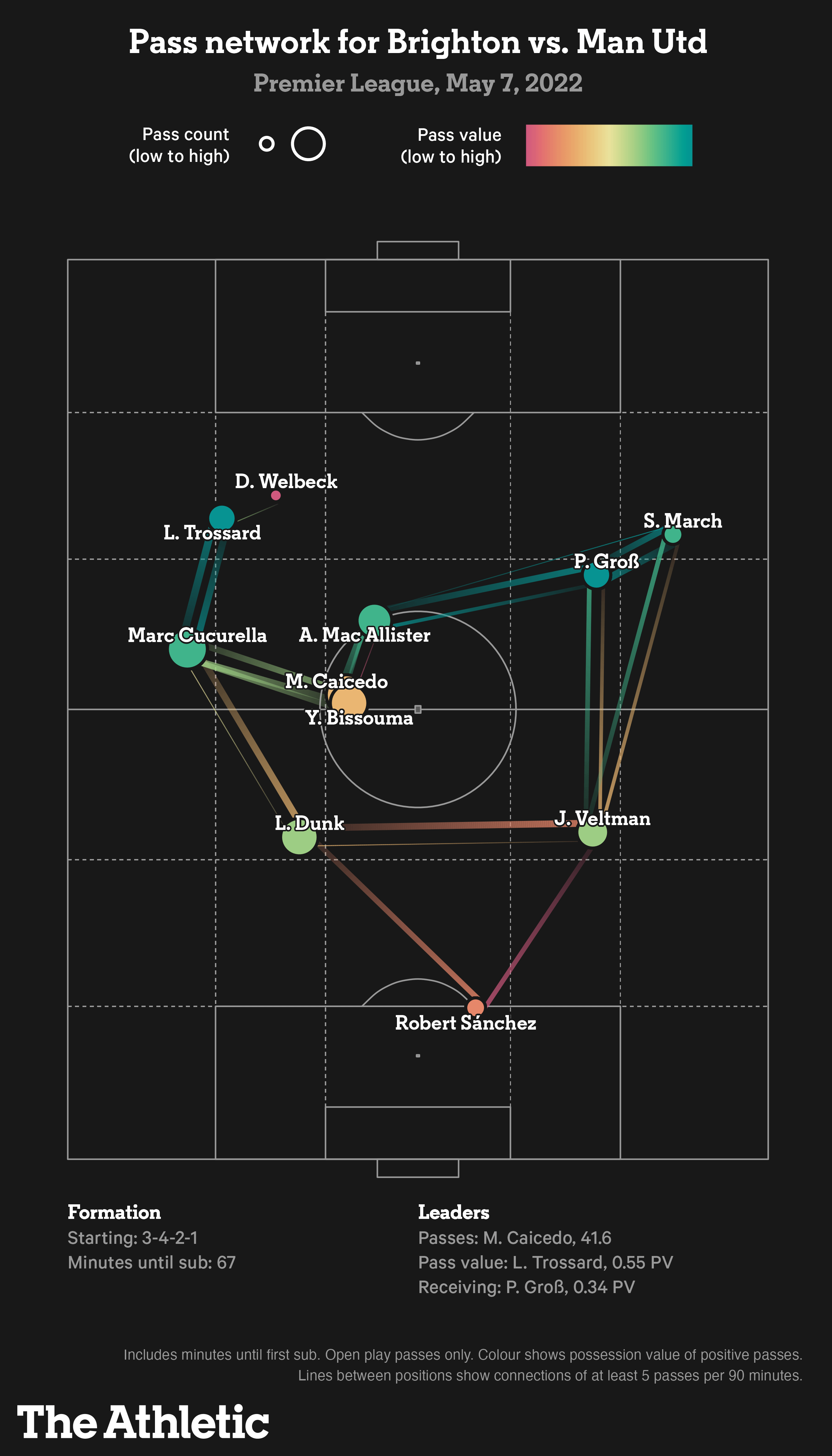
In that match, the four box players combined for Brighton’s fourth.
Caicedo passes to Bissouma…
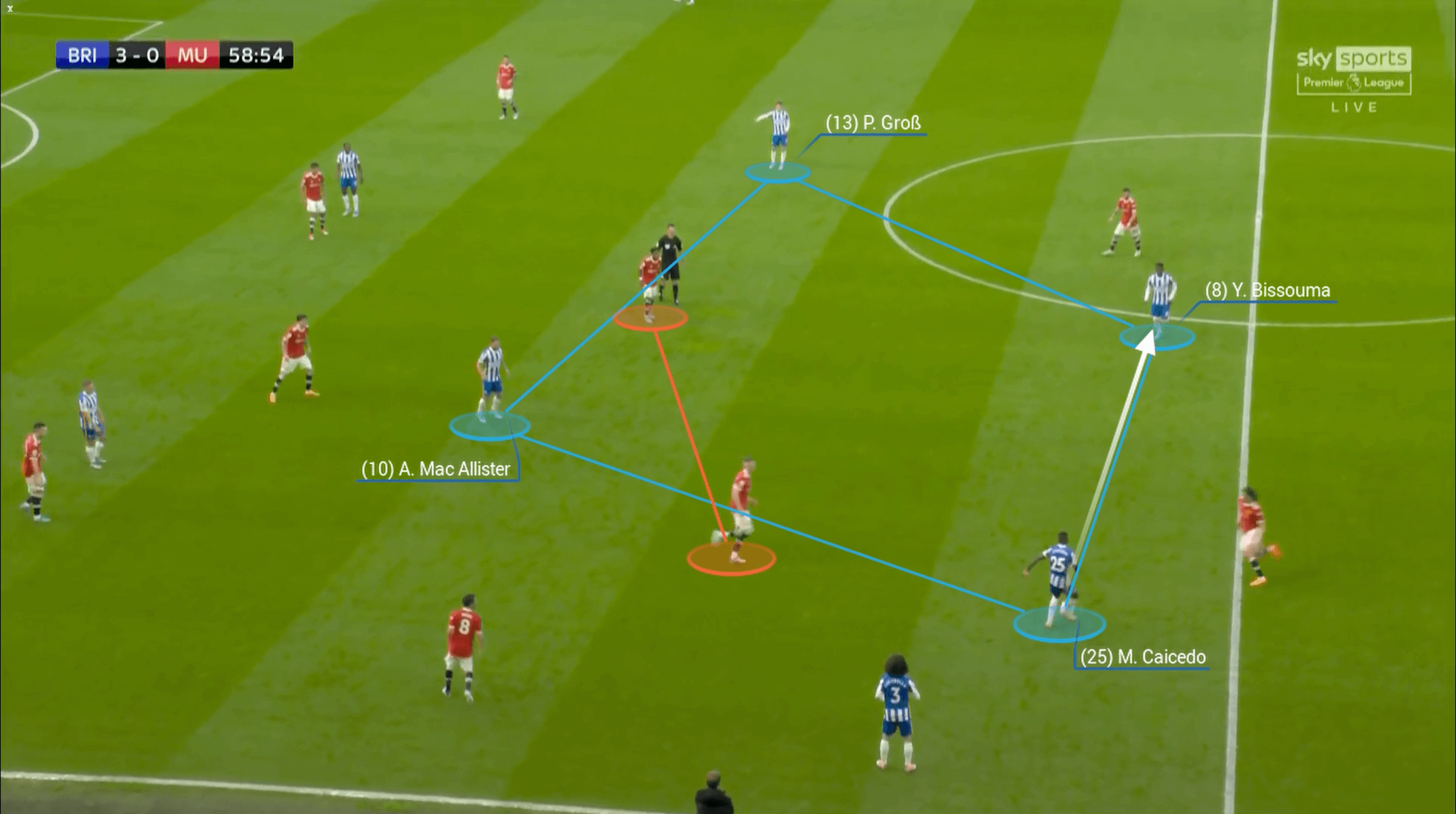
… who finds Mac Allister. He breaks the United midfield to find Gross in space. All three passes are played with one or two touches — ball speed.
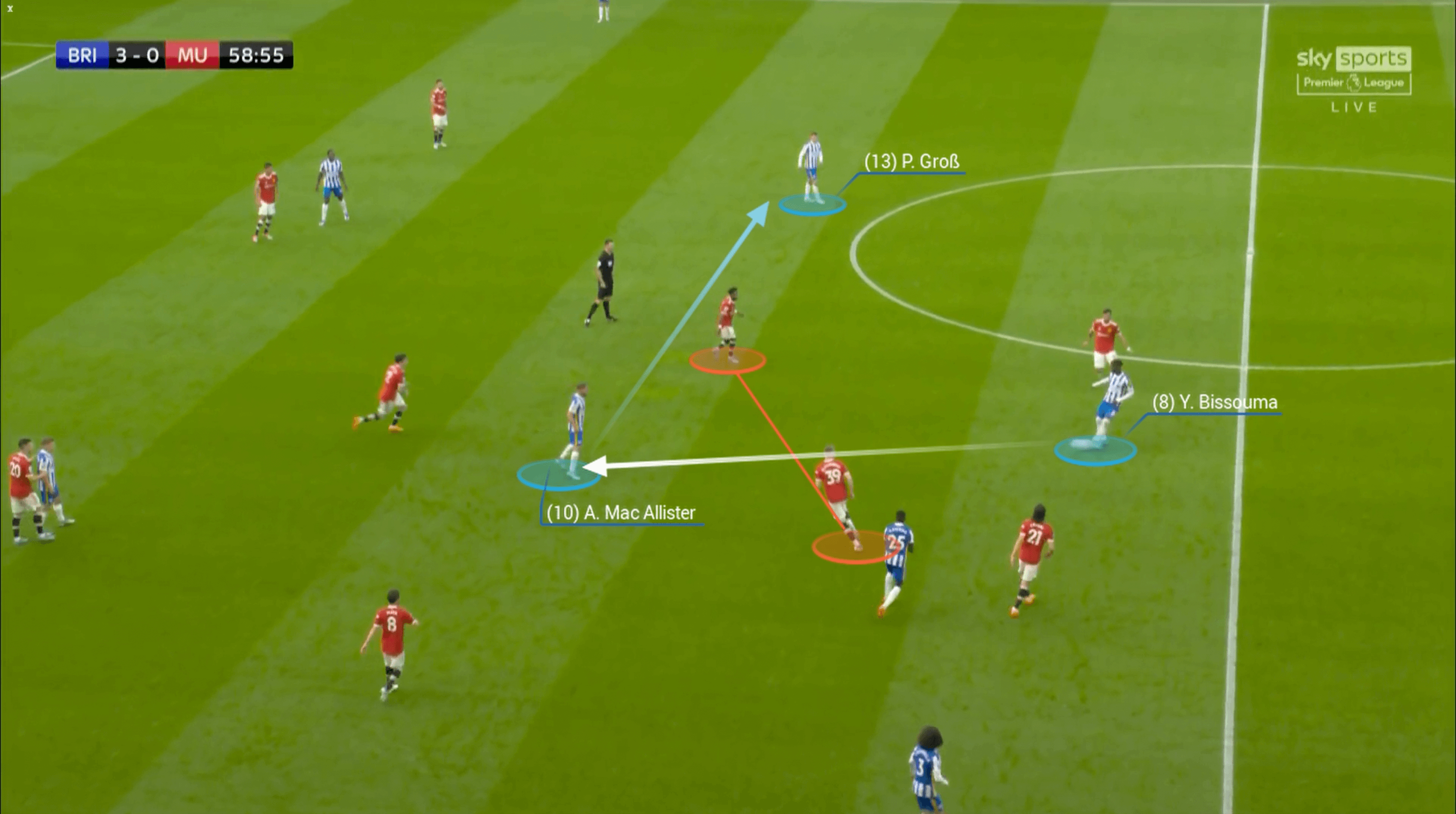
Danny Welbeck’s movement
Still on the fourth goal at the Amex, Gross finds Welbeck with a through ball; the forward consistently times his runs well and curves his runs to stay onside.
His chip is going in anyway, but Diego Dalot’s goalline clearance ricochets in off Trossard.
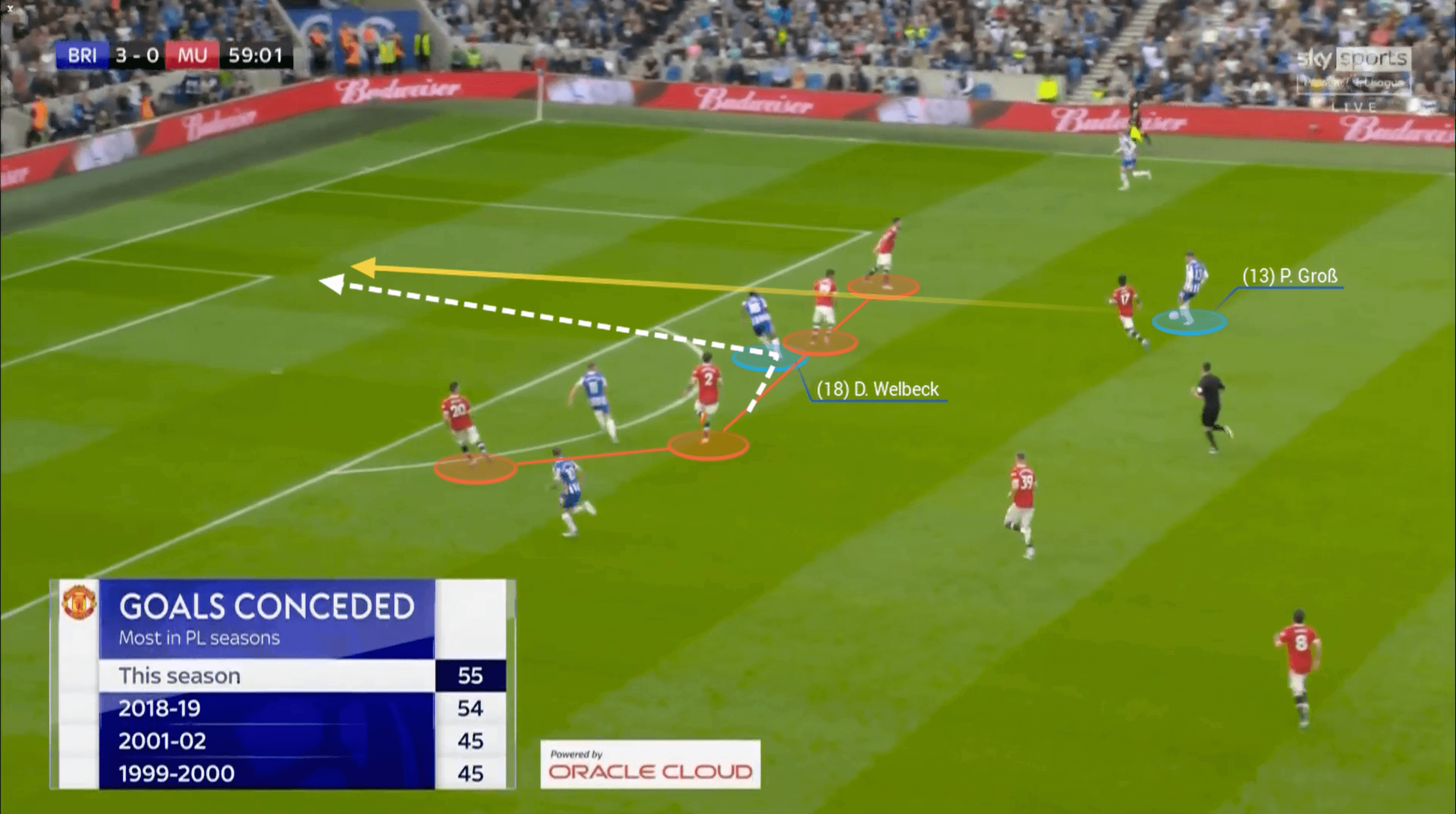
The pass — again from Gross — and run look almost identical to an attack on 14 minutes at Old Trafford. This time, Welbeck slips in the box and can’t fashion a shot, but the run is good.
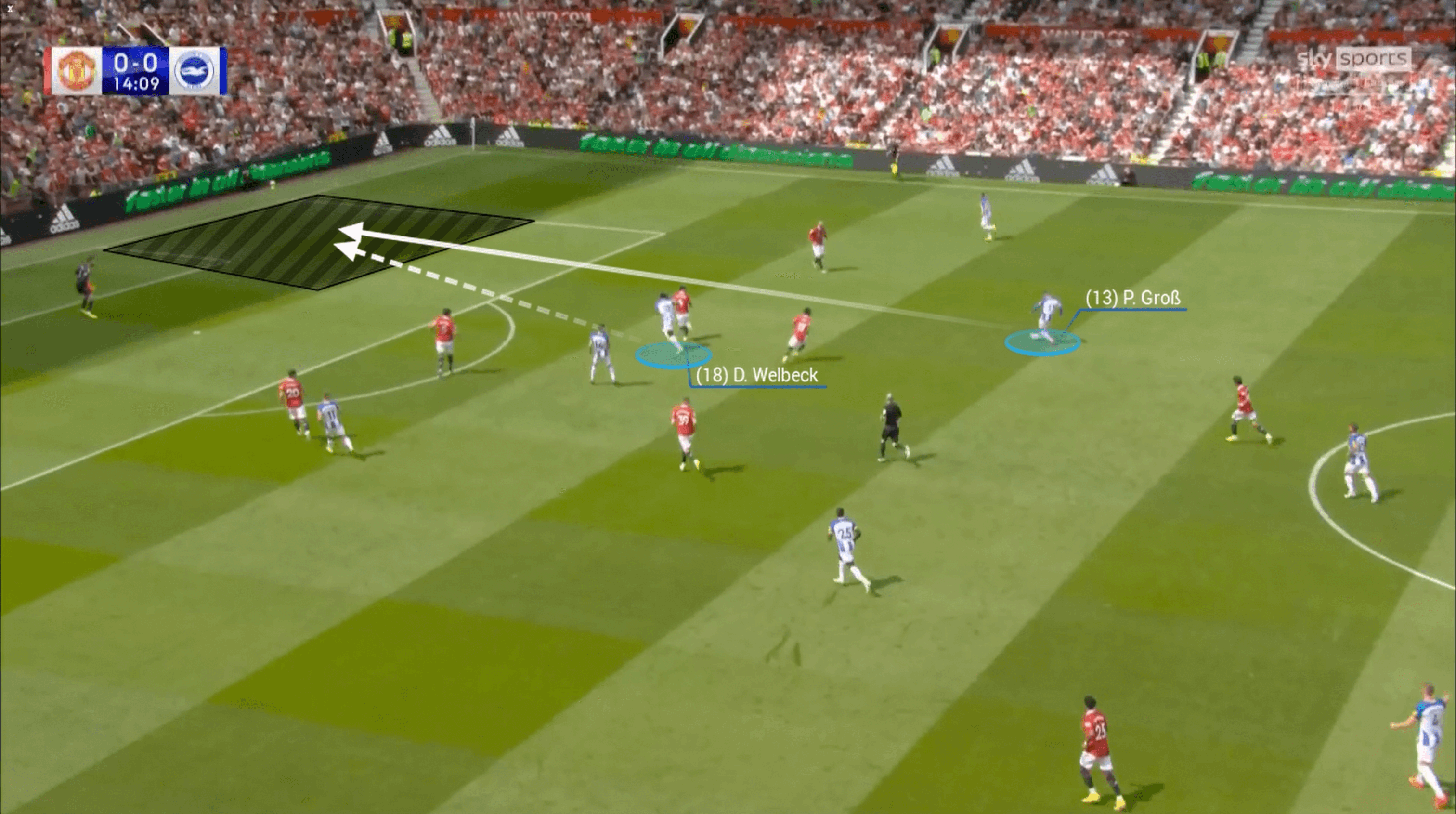
These runs were a consistent threat in the first half and United could not defend them.
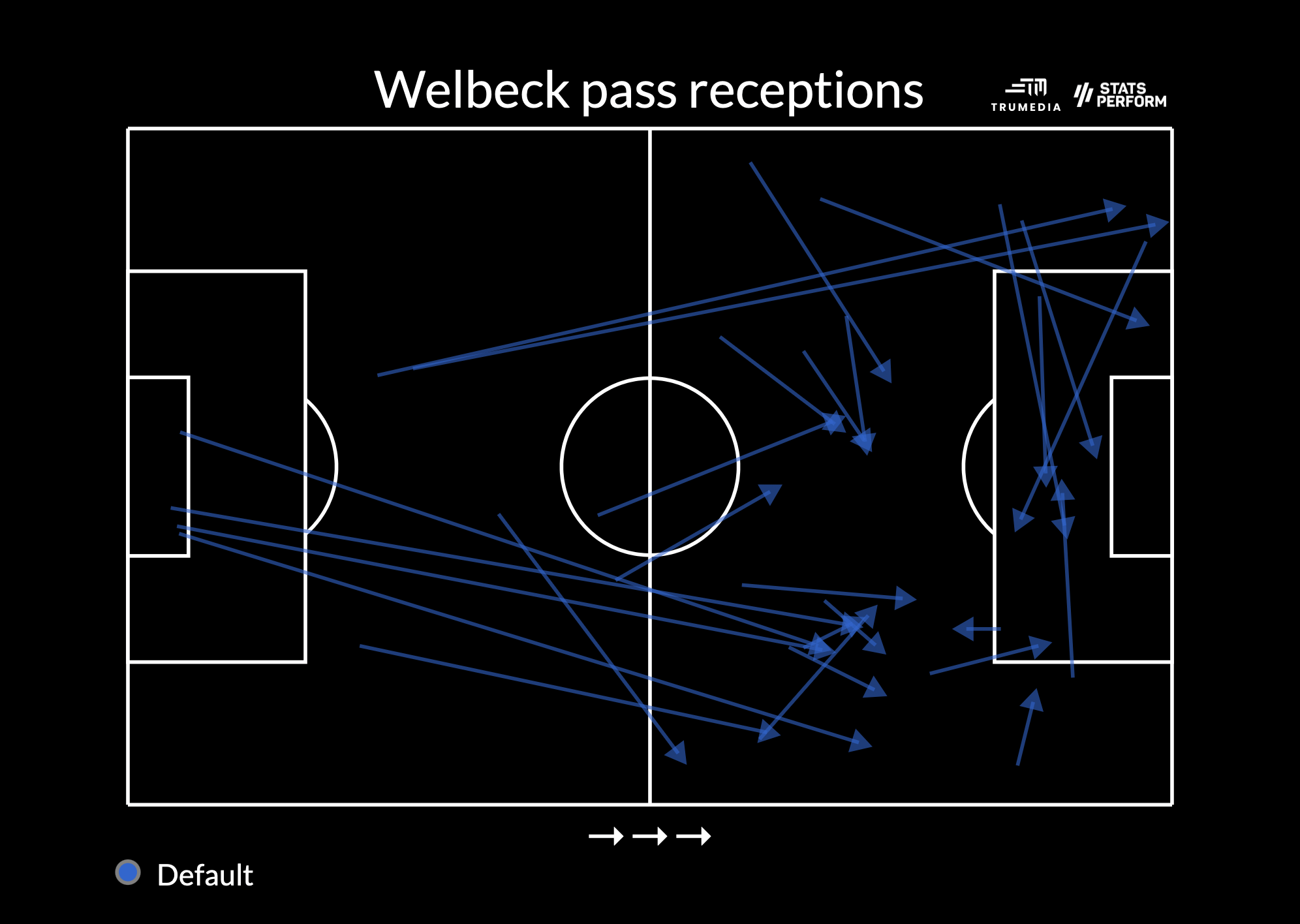
Welbeck’s movement was fundamental to Brighton’s opener; his run between Harry Maguire and Lisandro Martinez goes untracked. Welbeck then takes one touch to control and a second to square it for Gross.
Brighton recorded 12 shots in the first half and Welbeck was directly involved in half (4 shots taken, 2 chances created).
The role of the (inverted) wing-backs
Known for his tactical quirks, Potter’s 3-box-3 is underpinned by inverted wing-backs: right-footed Trossard on the left, left-footed March on the right.
They push high and make a front three when pressing, but drop down into a flat five when defending in their own half — note Welbeck’s limited defensive responsibility.
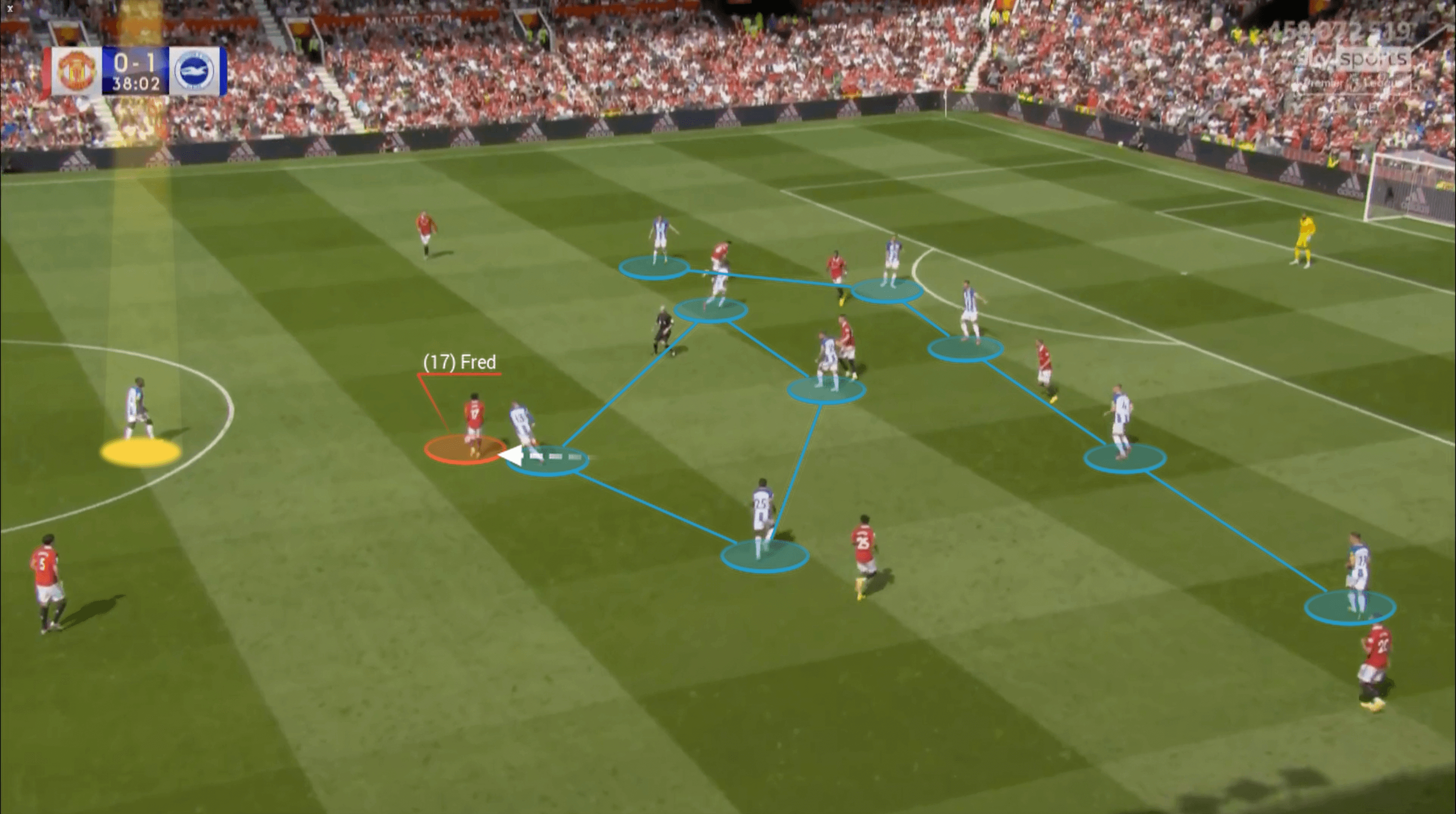
But they have a bigger role when Brighton are in possession. Trossard assisted twice in the home win and he and March were involved in the build-up for both goals at Old Trafford.
Trossard playing as a right-footer on the left better enables diagonal passes inside.
Exhibit A: diagonal pass for Welbeck’s straight run for the first goal.

For the second goal, March attacks Luke Shaw — on his weaker right side — one v one.
David de Gea can only parry his shot into Gross. Two-nil Brighton.
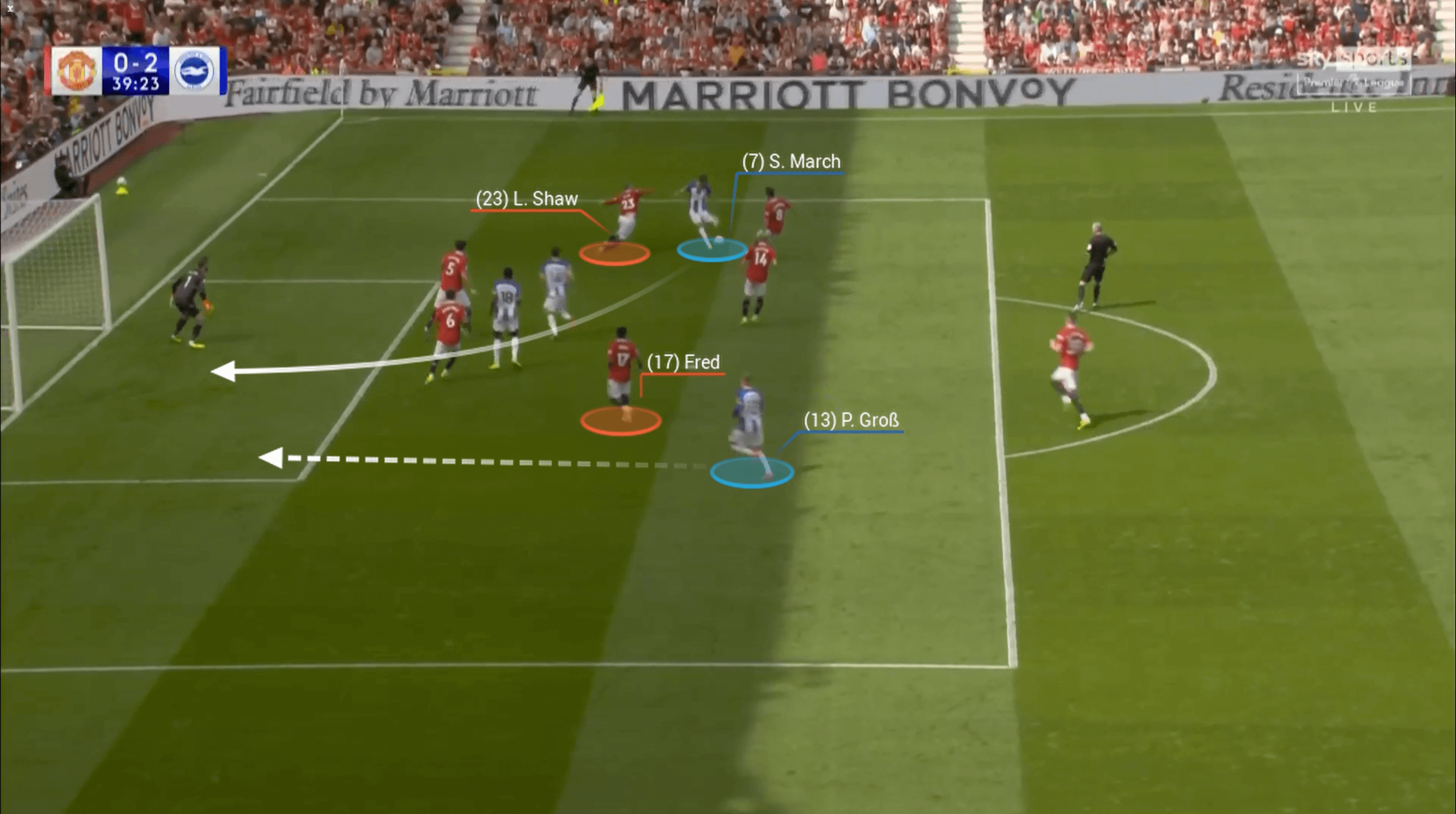
High pressing and pressing traps
In both games, Brighton pressed high in the first half.
The pressing structure was player-for-player in central zones (see Bissouma tracking Bruno Fernandes below) and the wing-backs would press the United full-backs.
United’s build-up remained the same — a back four plus Scott McTominay and Fred as the double pivot. The former is erratic in distribution and the latter better suited to playing in advanced areas than deeper ones.
The Amex, 34 minutes: Mac Allister and Welbeck jump onto a pass into McTominay…
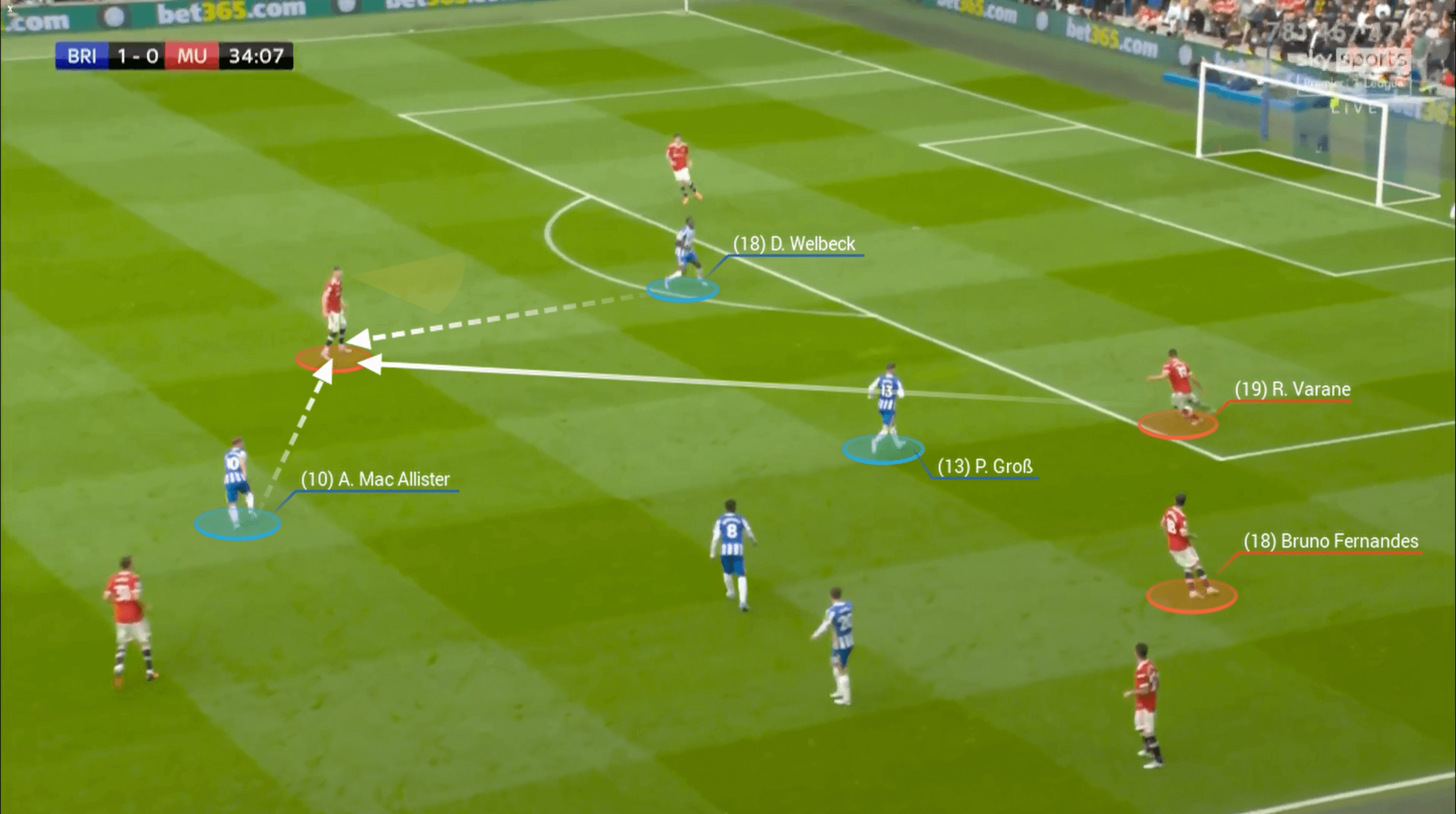
… and force a turnover to Trossard. He gets into the box and shoots wide.
Brighton even forced a turnover that ended in a shot inside the first 35 seconds at Old Trafford.
“When we could, we tried to press and put them under pressure. Our performance in the first half was really strong,” said Graham Potter after full-time.
With difficulties playing through, United had to play over or around the press. The former was less viable with De Gea’s kicking limitations over longer distances — over the past year, he ranks inside the bottom 35 per cent for launched pass completion rate (38.4%).
United had no Ronaldo out-ball in the first half either.
Old Trafford, eight minutes: Brighton press United back to De Gea. Gross leads the press, Welbeck is on the right.
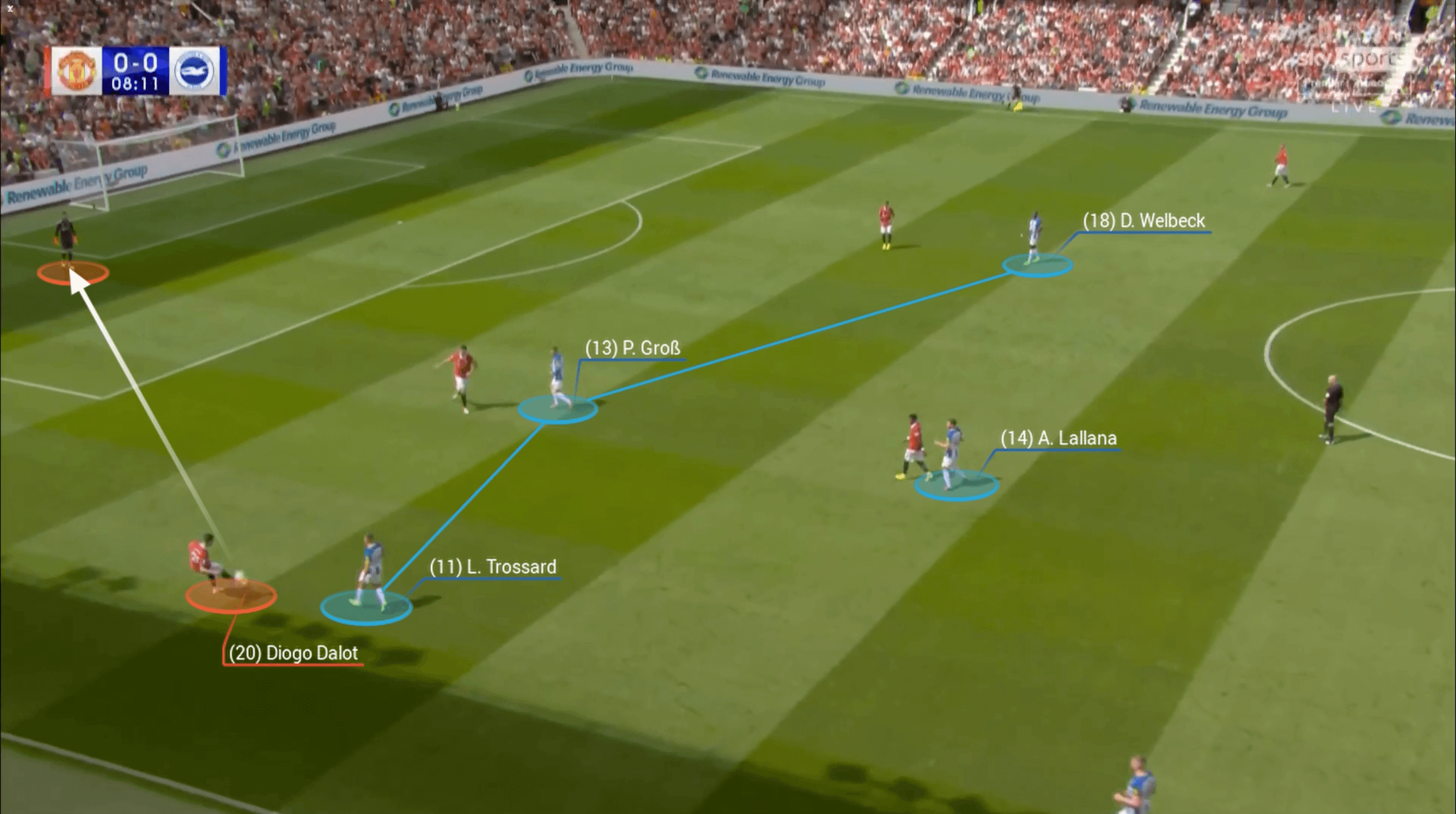
Gross arcs his run to force De Gea left.

The second line of pressure (Trossard and Welbeck) is positioned to pounce on short passing options (red arrows).
De Gea’s only feasible short pass is Fred. Trap set…

… De Gea plays into the trap and Fred has to release in one touch given the pressure from Lallana. Trossard anticipates the pass to Dalot and intercepts in the box.

Sixteen minutes: Dalot is once more pressed back to De Gea.
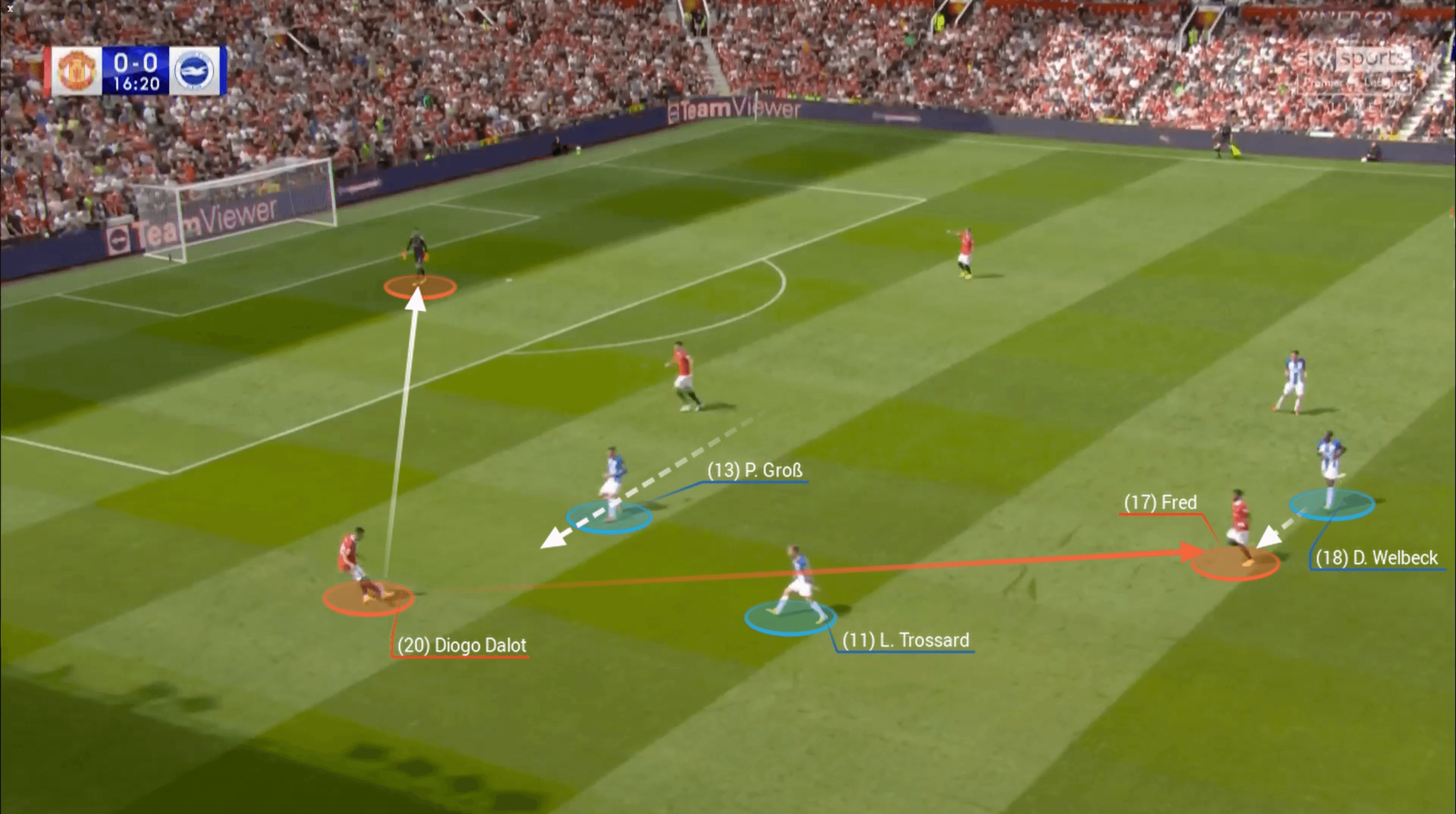
Brighton press with four again. Gross leads once more with Welbeck marking Fred, and March on the right.
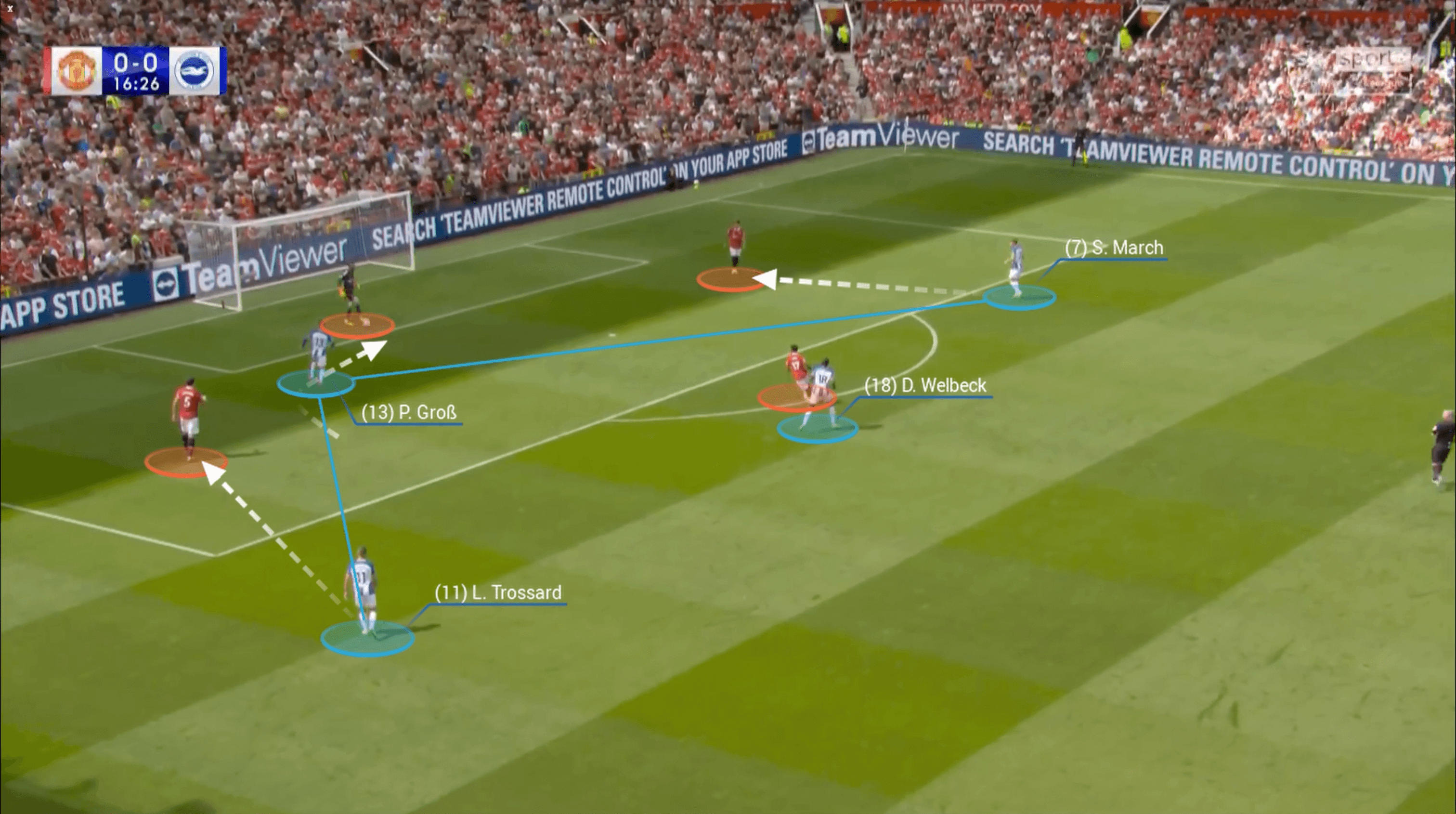
Gross’ arced run forces De Gea to play a left-foot wedge pass. This goes out for a Brighton throw-in — high turnover again.
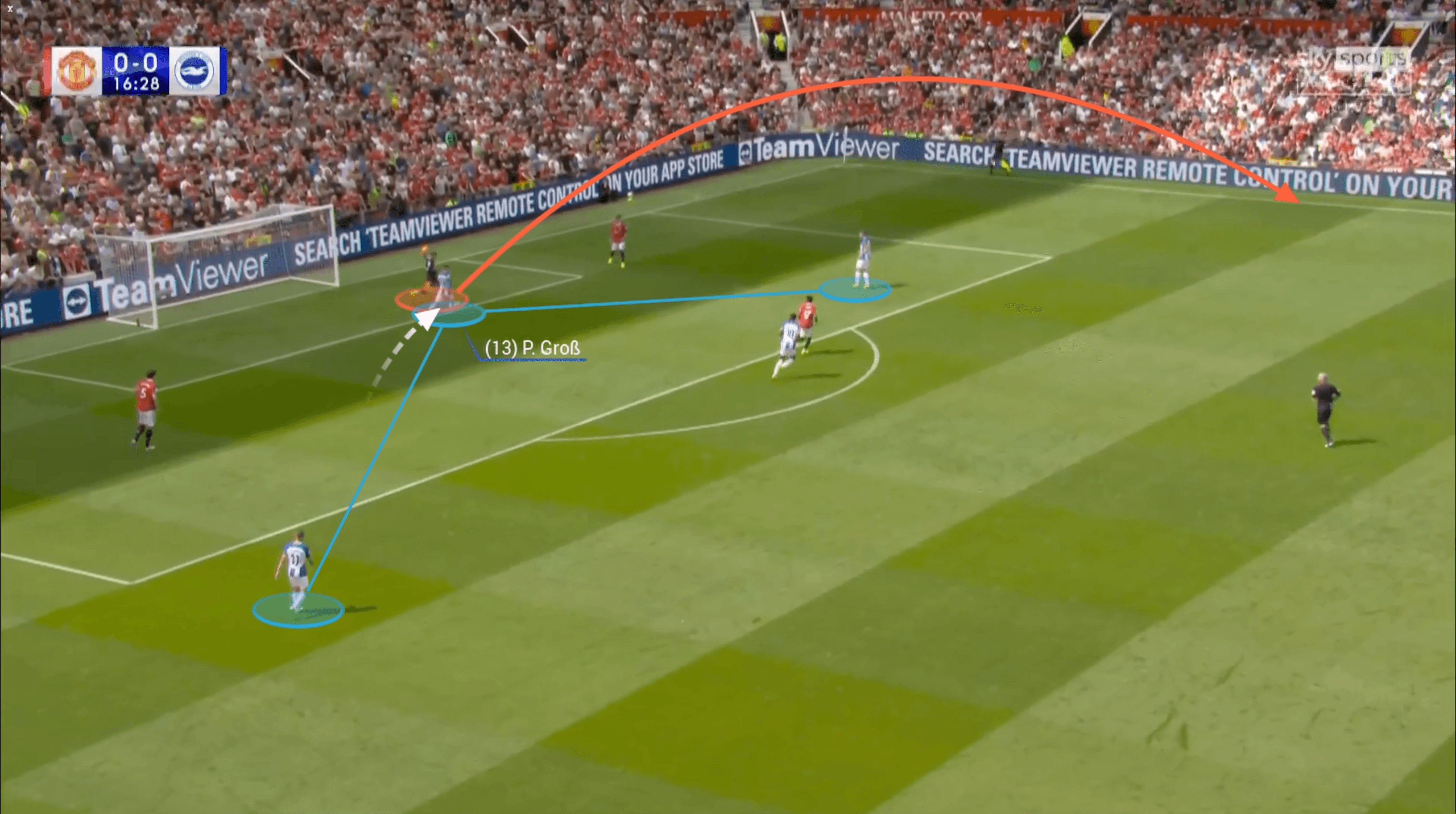
The result was a first-ever win for Brighton at Old Trafford after 14 failed attempts (2 draws, 12 losses). “We were brave and we gave everything,” Potter said at full-time.
Brighton’s head coach is renowned for his tactical tweaking and various formations, but a winning system was worth repeating.
